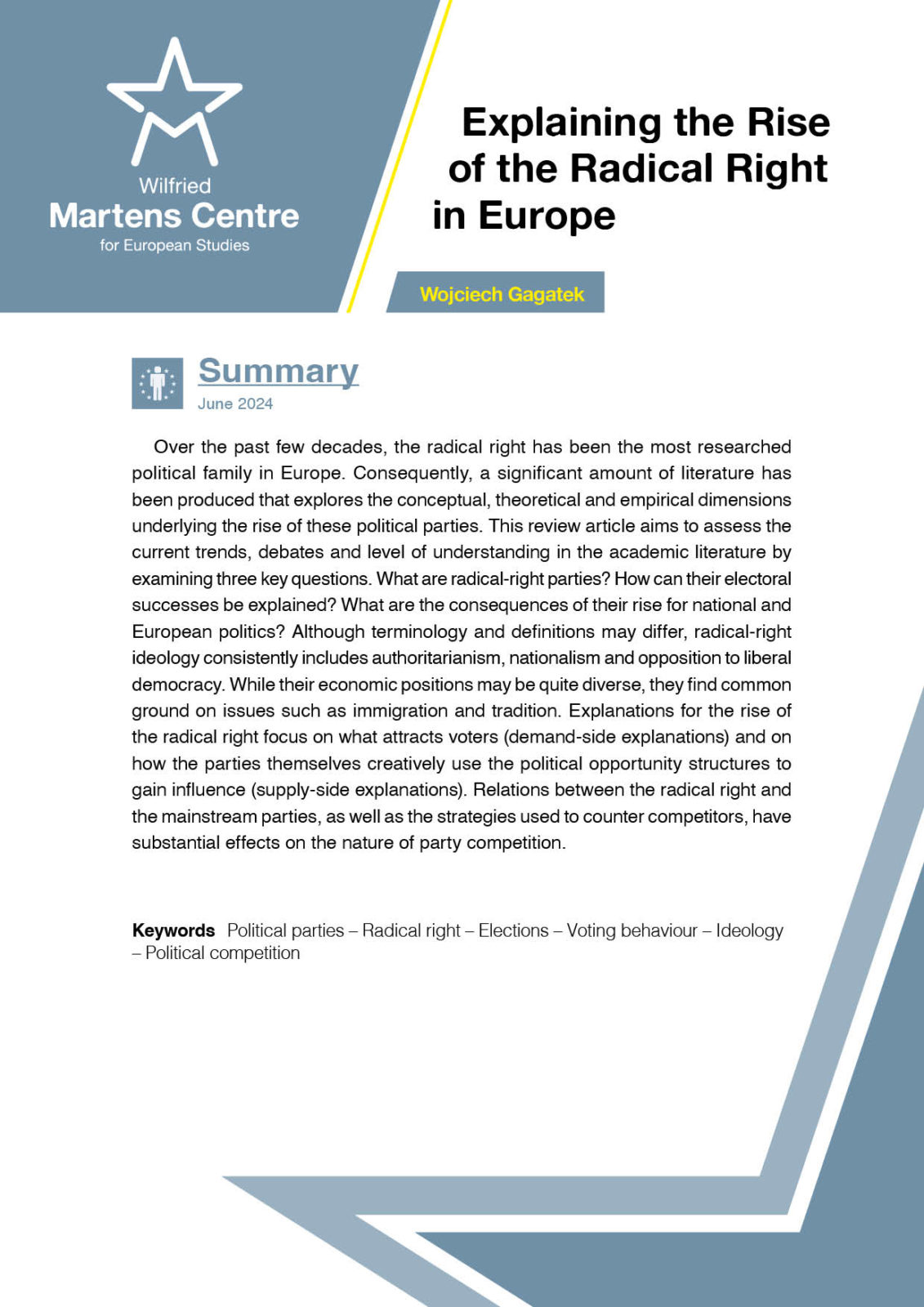Explaining the Rise of the Radical Right in Europe
13 June 2024
Over the past few decades, the radical right has been the most researched political family in Europe. Consequently, a significant amount of literature has been produced that explores the conceptual, theoretical and empirical dimensions underlying the rise of these political parties. This review article aims to assess the current trends, debates and level of understanding in the academic literature by examining three key questions. What are radical-right parties? How can their electoral successes be explained? What are the consequences of their rise for national and European politics? Although terminology and definitions may differ, radical-right ideology consistently includes authoritarianism, nationalism and opposition to liberal democracy. While their economic positions may be quite diverse, they find common ground on issues such as immigration and tradition. Explanations for the rise of the radical right focus on what attracts voters (demand-side explanations) and on how the parties themselves creatively use the political opportunity structures to gain influence (supply-side explanations). Relations between the radical right and the mainstream parties, as well as the strategies used to counter competitors, have substantial effects on the nature of party competition.
ENJOYING THIS CONTENT
